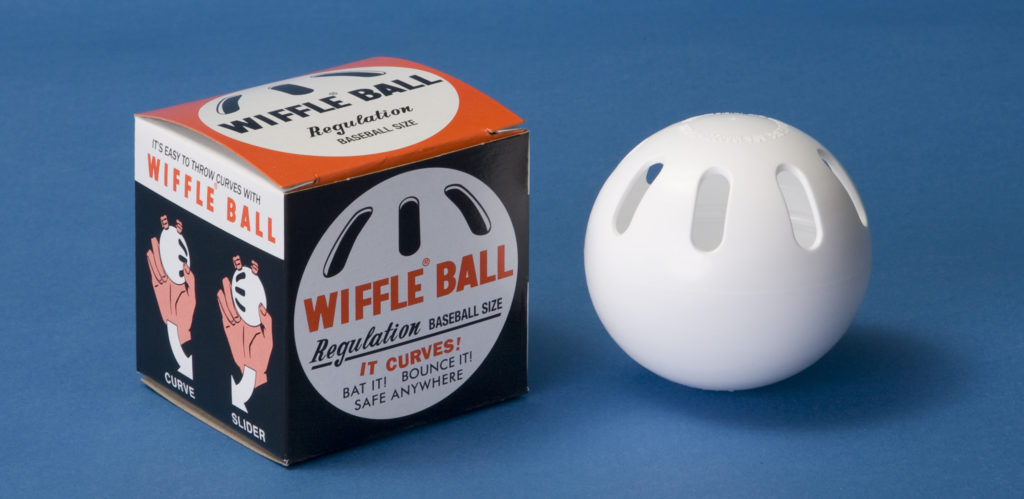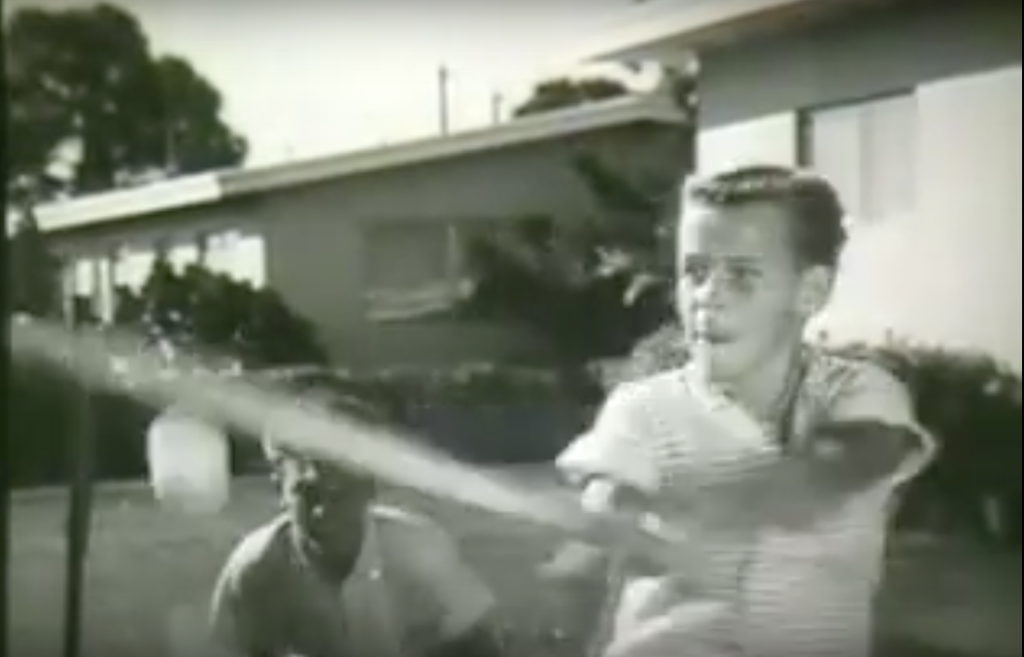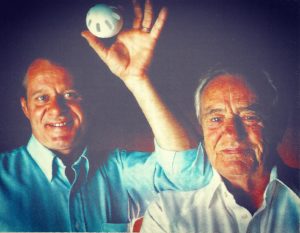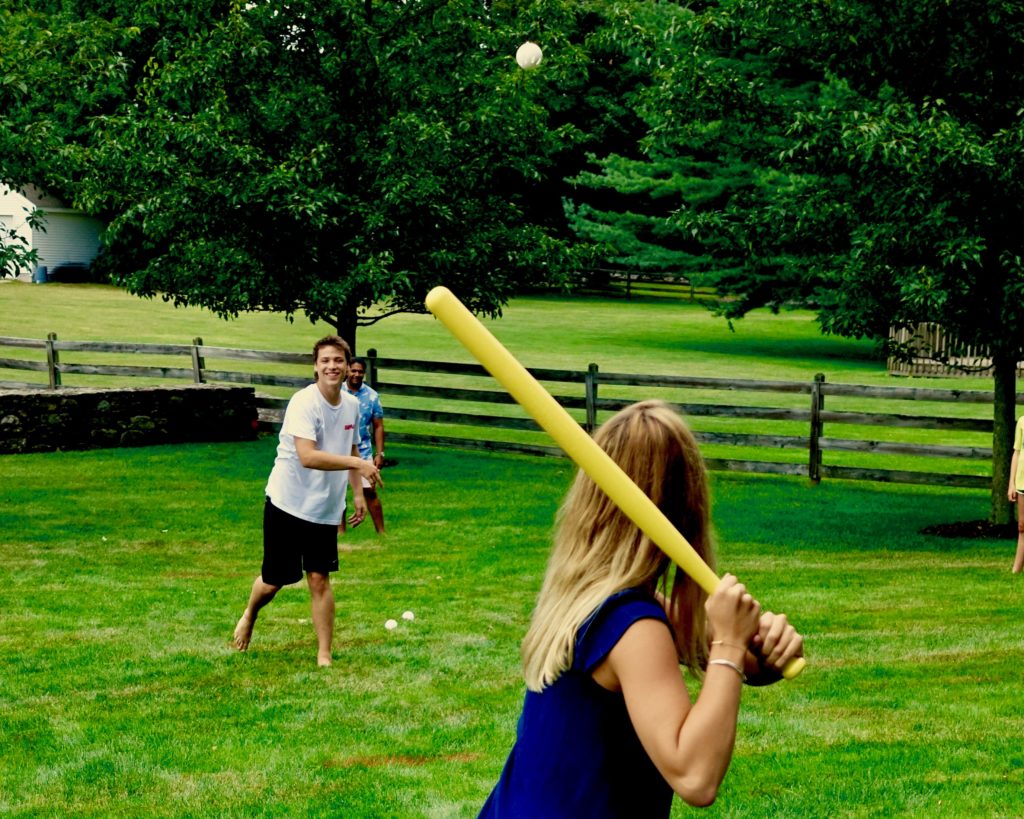Inventing the WIFFLE Ball

WIFFLE ball. Courtesy of Wiffle Ball Inc.
By Bobby Shipman
What do you think of when you think of summer? Beach days? Barbecues? Or a good old-fashioned game of WIFFLE Ball? Many people would answer the last.
The WIFFLE Ball has been around for a long time. Your parents, and maybe even your parents’ parents could have played with it. It is sold everywhere from toy stores to hardware stores. But have you ever stopped to wonder why it was invented or how it is made?

Still from an early WIFFLE ball ad. Courtesy of Wiffle Ball Inc.
The story begins in 1953 in Fairfield, Connecticut. Twelve-year-old David Mullany and his friends passed the long summer days by playing baseball. The only problem was that the baseballs, when hit with lots of force, can cause serious damage. David and his friends broke window after window. They even knocked out a porch light! David looked around his house and found two things that would cause less damage: plastic practice golf balls and a broom handle.
He soon discovered another problem. Throwing too many bad curveballs can hurt your arm. David’s father, also named David (we’ll call him Mr. Mullany), noticed the problem, too. He had been the pitcher on the University of Connecticut baseball team back in college. He had an idea.

Wiffle Ball inventors David A. Mullany (all grown up), and David N. Mullany. Courtesy of Wiffle Ball Inc.
What David didn’t know was that his dad was in trouble. Mr. Mullany’s company had failed. Despite his worries, Mr. Mullany thought he could make a better ball for his son to play with. If it worked, he could try selling them.
Mr. Mullany got a plastic sphere used in packaging perfume from a local factory. He experimented with different designs. He tried square holes. He tried diamond-shaped holes. He tried all kinds of holes. He and David tried them out in the backyard. Finally he found the perfect way to make the ball. He cut eight oblong holes into one half of the plastic ball. It worked!

Playing WIFFLE ball, 2017. Courtesy of Wiffle Ball Inc.
David and his friends called strikeouts “whiffs.” Mr. Mullany decided to name the invention the WIFFLE Ball. He applied to the U.S. Government for a patent so that no one could steal his idea. He borrowed some money to start making the balls.
At first he sold them at a local diner in Woodbridge for 49 cents each. The WIFFLE Ball was an instant hit. Woolworth’s department store agreed to sell them and they knew they had a home run!
The WIFFLE Ball factory is in Shelton, Connecticut. It is just a plain brick building, with a simple sign on the front. Inside there are 15 employees. Most of the work is done by machine.
Every WIFFLE Ball starts out as little pellets made of a plastic called polyethylene. The pellets are poured into two molds. One mold is a half sphere. The other is a half-sphere with eight oblong holes. The pellets are heated and they melt into the shape of the mold. Once the two halves are made, they are put on a conveyor belt and put into a machine that puts the two halves together. The ball is then packaged with the famous yellow bat, and shipped all over the world.

Manufacturing WIFFLE balls. Courtesy of Wiffle Ball Inc.
The WIFFLE Ball is the same today as it was the day it first met a bat. A third David now runs the company—Mr. Mullany’s grandson—with his brother Stephen. From a small Fairfield suburb to yards and parks all over the world, the WIFFLE Ball is an icon of summer fun.
Watch a video HERE.
Bobby Shipman is a fifth grader at Tariffville Elementary School in Simsbury. Look for his other stories on WhereILiveCT.org.
Images courtesy of The Wiffle Ball Inc.
Sources:
“What’s 50, Curvy and Full of Air? It’s the Wiffle Ball, Still Popular, Holes and All,” The New York Times, August 14, 2003
Wiffle.com





